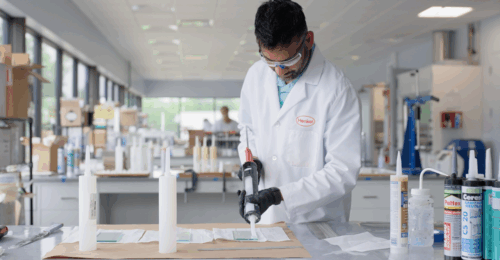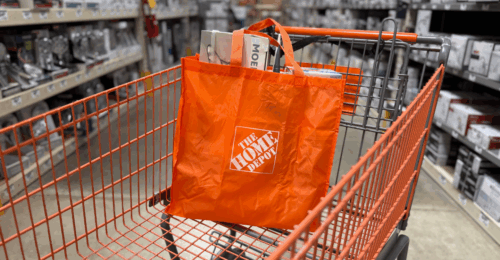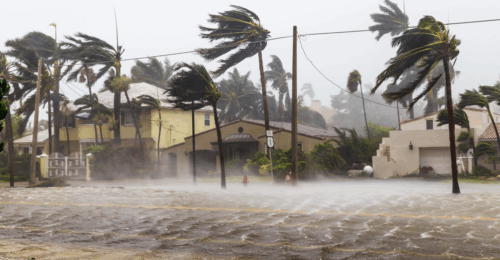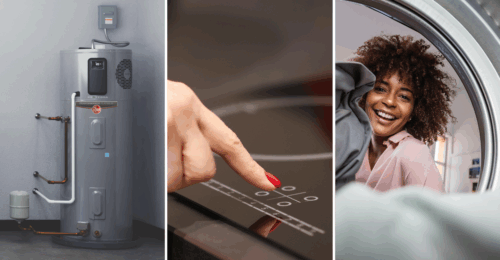If you’re a homeowner, you know just how essential smoke and carbon monoxide (CO) detectors are. They’re like silent sentinels, standing guard and ready to alert you to any lurking dangers. But just like all electronic devices, they don’t last forever.
It’s common for homeowners to set up their detectors and then forget about them. If it’s been a while since you’ve interacted with them, replacing your detectors might give you pause with all the different varieties available. But don’t worry. We’ll show you everything you need to know, from what type you need and when to replace, to how to recycle them.
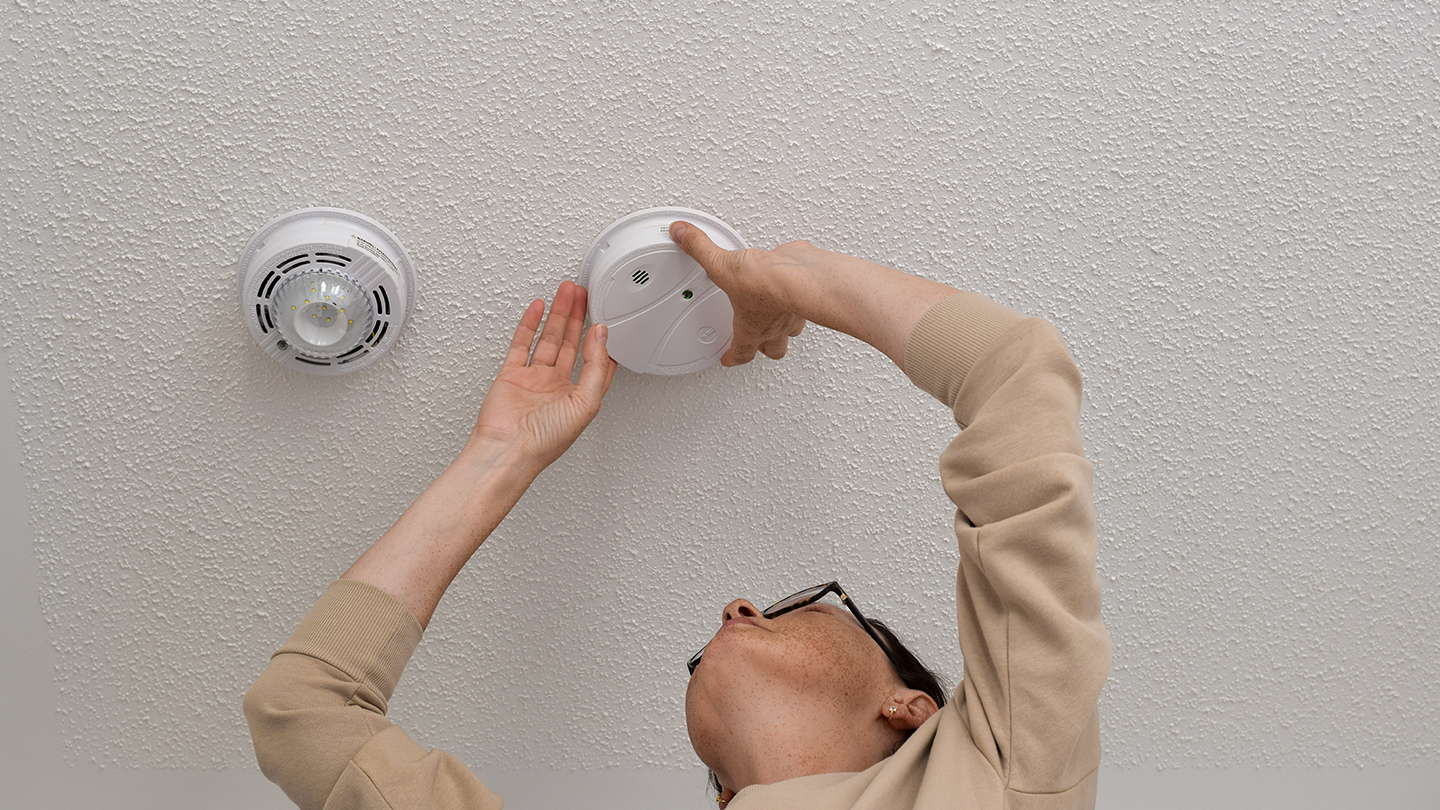
Before You Start
There are a few questions you should answer before looking into replacing your smoke or CO detector: What kind of detector do you need? What kind of detection method should you use? And how do you even check your device?
The Home Depot carries various types of smoke detectors for homeowners’ individual needs. The most common models of detectors are versatile and suitable for any room in the house, usually powered by batteries. Hard-wired detectors are integrated into a home’s electrical system and sound an alert across all connected detectors, with the added assurance of a battery backup in case of power outages.
Various detection techniques cater to different fire types and homeowner preferences. Ionization detectors are optimized for fires that form quickly, making them ideal for areas like bedrooms and hallways. However, they might sometimes produce false alarms – nobody wants a smoke detector going off while you’re cooking dinner. On the other hand, photoelectric detectors are adept at sensing slower, smoldering fires, making them ideal for kitchens and other living spaces. Some advanced models even include Wi-Fi connectivity features that will notify your smart device if they’ve been triggered, monitor indoor air quality and tell you where the fire is located in your home. These smart models can even turn off the alarms if they’ve been triggered accidentally, and they’ll also tell you when it’s time to replace the unit. For those seeking a comprehensive solution, dual-sensor smoke detectors incorporate both ionization and photoelectric detection mechanisms, ensuring a broader range of fire detection.
In the case of CO detectors, they’re especially important. Whereas fires have smoke and scents that can alert you to danger, CO is an odorless, colorless, tasteless gas that cannot be detected naturally, and it can be fatal in relatively small amounts. Just like smoke detectors, CO detectors should be on every floor of your home. In fact, 48 states have laws mandating the use of CO detectors. Different models include ones that come with replaceable batteries, plug in with battery backup, are hard-wired or have a 10-year sealed battery. Some devices even have screens that will display the CO levels in your home in real time. If you’d like to use just one device, combination detectors can detect both smoke and CO efficiently, offering a comprehensive safety solution. Of course, only you know what works best for your home, and the options are broad enough to find something for everyone.
Don’t forget to test your old systems before doing anything. For smoke detectors, it’s essential to conduct a visual inspection, evaluate the battery’s health, use the test button, and even consider a hands-on approach by performing a functional smoke test with a blown-out match or candle. Similarly, CO detectors require a visual check, timely battery replacement if applicable and the use of their test button. For a comprehensive assessment of CO detectors, homeowners might opt for professional testing or employ a CO test kit, all while ensuring the device’s placement aligns with safety guidelines recommended by the manufacturer. Since the fall marks the beginning of cooler weather and more time spent indoors, do your checks every October to make sure everything’s functioning well.
Recycling Your Smoke or CO Detector
Yes, you can recycle your smoke and CO detectors, but because of the components they contain, you cannot recycle them with regular household recycling. They may have radioactive materials, heavy metals or other hazardous components. Although the amounts are very small, they can be harmful if they’re not properly processed. Here’s how you can go about recycling them:
Smoke Detectors:
- Manufacturer Take Back – Many detector manufacturers offer take back programs for used smoke detectors. Check with the manufacturer or refer to the product manual.
- Hazardous Waste Collection – Smoke detectors, especially ionization-type alarms, contain a small amount of radioactive material. Many municipal waste programs have periodic hazardous waste collection days where you can drop off items like smoke detectors for safe disposal.
CO Detectors:
- Regular Recycling – Some CO detectors, especially those without digital screens or backup batteries, might be recyclable with regular electronics. Check with local electronics recycling programs.
- Hazardous Waste Collection – If your local electronics recycler doesn’t accept CO detectors, consider dropping them off during hazardous waste collection days, especially if they contain a backup battery. If your locality doesn’t offer that, contact your trash and sanitation department for guidance.
Maintenance Tips
- Some groups recommend that you test your detectors weekly. If your schedule is too busy to allow this, you should test your smoke and CO detectors at least once a year. Do everyone in your household a favor and give them a heads up before you test.
- Change batteries on your detectors every October unless it’s a 10-year unit.
- Replace smoke detectors every 10 years and CO detectors every 5–7 years unless yours is a 10-year sealed model.
- Vacuum occasionally for dust. When smoke detectors get clogged with too much dust, it can impair their detection abilities. So, keep them tidy!
- Incorporate detectors in a broader home safety strategy. Be sure your household knows where each smoke detector is as part of your overall fire safety plan.
Remember, regular maintenance, periodic replacements and responsible recycling are crucial. By following these steps, not only do you ensure your home’s safety, but you also contribute positively to the environment. With knowledge and proactive measures, we can create safer homes and a more circular economy at the same time.

